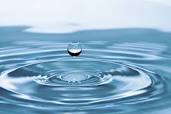The Five (5) Chemical Properties of Soil
Soil chemical properties (chemical properties of soil) are sometimes referred to as the soil nutrients. These are nutrients absorbed in solution by roots of plants. You need to know that soil chemical properties can be broadly divided into two groups.
The first group consists of those properties which are required by plants in large
amounts. They include essentially soil reaction nitrogen, phosphorus, sodium, potassium, magnesium and calcium.
These are generally known as macro-nutrients. The second group is made of nutrients required by plants in only small quantities, and comprises a wide range of elements such as born copper, iron, zinc manganese aluminium and molybdenum. This group is generally referred to as micro-nutrients or as trace elements.
The Five (5) Chemical Properties of Soil
1. Soil Reaction
One of the most important chemical properties of the soil is its reaction. Soil reaction refers to the acidity or alkalinity of the soil. Do you know why soil reaction is so important? It is because;
It influences many of the other chemical properties.
It largely determines the chemical environment in which plants and soil micro- organisms live.
Soil acidity refers to a situation in which soil solution possesses a lot of hydrogen ions (H+) more than hydroxyl ions (0H-).
Soil alkalinity, on the other hand, is when hydroxyl ions are more than the hydrogen ions in soil solution.
A third situation arises when soil solution has an equal concentration of H+ and 0H- ions. In such a case we talk of soil neutrality.
The exact relationship in any particular case is ordinarily evaluated in terms of hydrogen ion concentration which is usually expressed in terms of pH. The pH value of a solution is defined as the logarithm of the reciprocal of the hydrogen ion concentration.
The pH value ranges from 1 – 14. A soil is said to be acidic when its pH is less than 7, alkaline when it is above 7 and neutral when it is 7.
2. Nitrogen
Do you know that nitrogen was discovered by a Scottish physician named Daniel Rutherford in 1772? Nitrogen is known to be the fifth most abundant element in the
universe and makes up about 78% of the earth’s atmosphere it is largely an inert gas. Nitrogen is obtained from liquefied air through the process known as fractional distillation.
Read Also : Methods of Disposal of Waste Pesticide Containers
Soil nitrogen is a very useful element for crop production. Its absence results in yellowish colour of plants.

However, nitrogen is a major component of NPK fertilizer. It is to be noted that the largest use of nitrogen is for the production of ammonia (NH3). Usually large of amounts of nitrogen are combined with hydrogen to produce ammonia.
3. Phosphorus
Do you know that phosphorus was discovered before nitrogen? While nitrogen was discovered in 1772, phosphorus was discovered in 1669 by Hennig brand who prepared it from urine.
Phosphorus is never found free in nature but widely distributed in combination with minerals. Hence it has a geologic pool. The presence of phosphorus in adequate amount in soil is also crucial to crop production. It also forms a major component of NPK fertilizers.
Phosphorus is also important in the production of steels, phosphor bronze and many other products. Finally, is an essential ingredient of all cell protoplasm, nervous tissues and bones.
4. Exchangeable Cations
Exchangeable cations are also referred to as metallic cations. They are derived from the rocks and they include calcium, magnesium, potassium and sodium.
Calcium is the chief exchangeable base in the soil. It is derived mainly from calcium carbonate and to some extent from calcium sulphate.
Its abundance in the soil appears to be the main determinant of soil reaction and nutrient status. However, the major problem of calcium is that it is easily leached and washed away by drainage water.
Magnesium follows calcium in its abundance as an exchangeable base in the soil. It is
an essential element for plant growth. It is derived mainly from ferromagnesian rock-forming minerals such as olivine, hornblende and pyroxene.
Potassium is formed from silicate minerals such as orthoclase and potash micas. Potassium exists in two forms in the soil viz, the readily available another relatively unavailable forms. The readily available potassium is found in the soil solution. Potassium is an important of the NPK fertilizer.
Sodium is in the family of exchangeable base but not a major cation. This is because it is the least common of the metallic cations in soils. However, it is quite an important element in alkali soils found in arid areas of the world.
5. Micro-nutrients
Can you remember what we said about micro-nutrients? Do you remember that they are soil elements required in small quantities but crucial to crop production? They are many but let us briefly see three of them.
Boron is one of the simplest of atoms found in a variety of minerals related to borax. It is a relatively rare element in the earth’s crust representing only 0.001%. It was discovered by Davy, Gay-Lassac and Thenard in 1808.
Boron is necessary in small amounts for plant growth. In larger amounts it is poisonous to plants and the range can be small. If the signs of boron deficiency supplement can be applied.
Copper as a micro-nutrient in the soil is strongly attached to organic matter. As a result it does not travel very far after release into the soil and it hardly enters groundwater.
Too much of copper causes toxity which is dangerous to both soil flora and fauna lives. Copper can interrupt the activity of micro-organisms and earthworms in soil negatively. This may seriously slow down the decomposition of organic matter.
Zinc is another one of the most common elements in the earth’s crust and is soil micro- nutrient. The level of zinc in soil increases mainly from disposal of zinc wastes from metal manufacturing industries and coal ash from electric utilities. If there is zinc deficiency in soil, a supplement is usually applied.
In conclusion, this article has briefly shown the important characteristics and functions of soil chemical properties. These soil chemical properties include pH or soil reaction, nitrogen, phosphorus, exchangeable cations (i.e. calcium, magnesium, potassium and sodium) and micro-nutrients (e.g. boron, copper, zinc, iron, molybdenum, manganese).
You have seen that all these chemical properties of soil serve on purpose or the other to make the soil what it is. Note that soil pH influences other soil chemical properties while nitrogen, phosphorus and potassium are components of chemical fertilizers that revitalize the soil.
Remember that exchangeable cations of calcium, magnesium, potassium and sodium act as nutrient bases for soil. Finally, micro-nutrients are trace elements that are needed by plants in small quantities.
Those properties considered in this article include pH, nitrogen, phosphorus, exchangeable cations (calcium, magnesium, potassium and sodium) and micro-nutrients such as boron, copper and zinc.
Soil pH measures how acidic or alkaline a soil is. When pH value is less than 7, it is said to be acidic, when it is more than 7 it is alkaline but neutral when it is 7, the pH range is 1 to 14.
You remember it is Rutherford who discovered nitrogen in 1772!!! Nitrogen makes up 78% of the grasses in the atmosphere. It determines the greenness of plants and it is a major component of NPK fertilizer.
Could you recollect that phosphorus was discovered before nitrogen and that was in 1669 by Hennig Brand? Phosphorus is of geologic pool and also an important component of NPK fertilizer.
Exchangeable cations are also known as metallic cations. These are calcium, magnesium, potassium and sodium. Generally, they act as nutrient asses in soil.
Calcium is easily leached and washed away by water while readily available potassium is found in soil solution.
Read Also : Chemical and Physical Properties of a Water Body
Magnesium is next in abundance to calcium while sodium is the least common of all the metallic cations. Potassium is also important for its inclusion in the NPK fertilizer.
Micro-nutrients are also known as trace elements and they are needed in minute qualities by plants. If they are absent, plants may suffer but their supplements are available. Examples of these are boron, copper and zinc. One common feature of micro-nutrients is that they are found mainly in earth’s crust.



